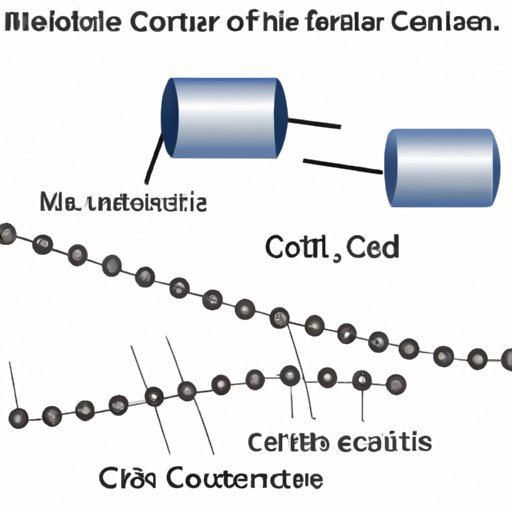Introduction
Have you ever wondered why metals conduct electricity? It seems odd that these solid objects can transfer energy from one point to another with ease. The science behind metal conductivity is fascinating, and understanding it can lead to new discoveries in fields such as electrical engineering and material science. In this article, we will explore the inner workings of metal conductivity from the atomic level up to practical applications in our daily lives.
The Science Behind Conductivity: Exploring the Inner Workings of Metal’s Ability to Conduct Electricity
Before diving into the details, let’s establish what we mean by conductivity. Conductivity is the ability of a material to conduct or transfer energy, in this case, electrical energy. The study of metal conductivity has been around for centuries, with scientists like Benjamin Franklin experimenting with electricity and metallic conductors in the mid-1700s.
From Atoms to Current: Understanding Why Metals are Electrical Conductors
Metal atomic structure plays a significant role in its ability to conduct electricity. Atoms are made up of protons, neutrons, and electrons. Metals have unique atomic arrangements that allow electrons to move freely and interact with each other, resulting in the flow of current. The outermost electrons in metal atoms are loosely bound and can move throughout the solid material. This characteristic makes metals excellent conductors of electricity.
The Power of Metal: How Electrons Move Through Conductive Materials
Current flows in conductive materials when electrons move from one atom to another. There are two types of electrons involved in this process: free electrons and bound electrons. Free electrons are not associated with any particular atom and can move throughout the metal, carrying energy. Bound electrons are associated with specific atoms and are not involved in conductivity.
The Fundamental Properties of Conductive Metals and Their Role in Shaping Our World
Common conductive metals include copper, aluminum, silver, and gold. These metals are widely used in electrical applications, from wiring in buildings to electronic devices. For example, copper is commonly used in electrical wiring because it is an excellent conductor and is less expensive than other metals. Gold is used in electronic components because it is resistant to corrosion and has excellent conductivity, ensuring a reliable connection between components.
Breaking Down Conductivity: How Metals Facilitate an Electric Circuit
An electric circuit is a closed loop that allows electrons to flow continuously from one point to another. Metals help facilitate this flow by providing a pathway for electrons to move between the power source and the intended destination. In the case of electrical wiring, metal conductivity allows for the safe and efficient transfer of energy from the power source to other electrical devices.
The Chemistry of Electrical Conductivity: The Unique Properties of Metallic Bonds
Metallic bonds refer to the atoms bonding together in a unique way that results in their ability to conduct electricity. Metal atoms exist in a closely-packed lattice arrangement, with the outer electrons interacting with multiple atoms at once, creating a bond. This bond allows for the transfer of energy from one end of the metal to the other. The free electrons surrounding the nuclei of the metal atoms are called a “sea of electrons” and are responsible for conducting electricity through the metal.
Conclusion
Overall, understanding why metals conduct electricity is essential for many fields, from engineering to electronics. Metals’ unique atomic structure and physical properties make them ideal for conducting electricity, leading to numerous practical applications. By understanding the process of metal conductivity, we can continue to develop new and innovative technologies that revolutionize our world.
